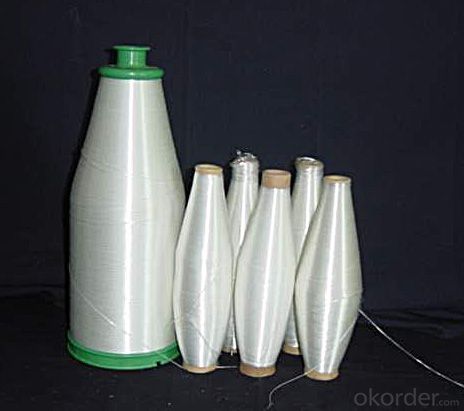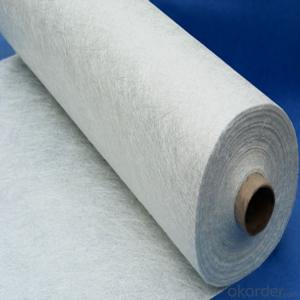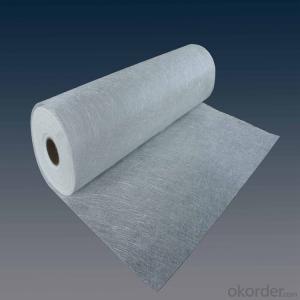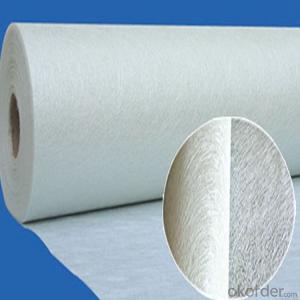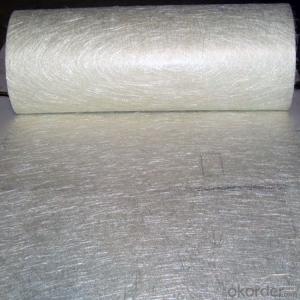Chopped Fiberglass Strands E Glass or C Glass Twisting and Plying Yarns
- Loading Port:
- Shanghai
- Payment Terms:
- TT or LC
- Min Order Qty:
- 20000 kg
- Supply Capability:
- 200000 kg/month
OKorder Service Pledge
OKorder Financial Service
You Might Also Like
Description:
C-or E-textile glass a kind of additional twisting and plying yam. With the characteristics of high strength, corrosion resistance, heat resistance and high moisture absorption, no-alkali yam has high electric insulation, so it used to produce weaved wires and cables’ wrap cladding, protection sleeve, train of mine, insulation materials of electric machinery, every yam of woven cloth and other industrial yam. It can also supply big and little paper cube and other cube yams with different shapes and different roll weight. Product Features:
Product Features:
● Good Dispersibility.
● Less fuzzy.
● Density Even. Product Specifications:
Product Specifications:
Product Code | Tex | diameter (um) | Sizing. | breaking strength | Twist |
CC7.5-22-1/2 110S | 44 | 7.5 | paraffin | ≥15.5 | 110±10 |
EC9-33-1/2 65S | 66 | 9 | ≥24.1 | 65±5 | |
EC8-25-1/2 65S | 50 | 8 | ≥19.2 | 65±5 | |
CC9-33-1/2 65S | 33 | 9 | ≥20.6 | 65±5 | |
CC11-44-6/0 | 264 | 11 | ≥81.6 | ||
CC11-44-1/3 110S | 132 | 11 | silane | ≥40.8 | 28±3 |
EC9-68-1/0 28Z | 68 | 9 | ≥18.0 | 28±3 |

Packaging:
conforms to strict standards on packaging of every single cone to ensure customers' satisfaction, from inspection on appearance of cone, color difference, flaws, etc. before packaging to the selection of proper plastic bags, labels inside the cone, and carton packing.
- Q: How does the fiber dispersion affect the processing time of chopped strand composites?
- Fiber dispersion significantly affects the processing time of chopped strand composites. Inadequate dispersion of fibers can lead to the formation of fiber clusters or agglomerates, which hinders the flow of resin during processing. This results in longer processing times as the resin needs to penetrate and surround the fiber clusters, leading to incomplete wetting and poor interfacial bonding. On the other hand, well-dispersed fibers allow for efficient resin impregnation, leading to faster processing times and better overall composite properties.
- Q: What are the different forms of fiberglass chopped strand available?
- There are multiple options available in the market when it comes to fiberglass chopped strand. These options include: 1. Chopped strand mat (CSM): CSM is a fabric made of randomly distributed chopped strands held together by a binder. It is commonly used in hand lay-up processes and is ideal for flat or slightly curved surfaces. 2. Chopped strand continuous roving (CSCR): This form consists of continuous strands of fiberglass chopped into shorter lengths. CSCR is often utilized in filament winding, pultrusion, and compression molding processes, offering excellent mechanical properties and high strength. 3. Chopped strand mat with a polyester veil (CSM-PV): This type of chopped strand mat comes with an additional layer of polyester veil on one side. It provides an improved surface finish and reduced print-through compared to regular CSM, making it suitable for applications that require a smoother appearance. 4. Chopped strand designed for thermoplastics: This type of fiberglass chopped strand is specifically developed for thermoplastic applications like injection molding or extrusion processes. These strands are typically coated with a sizing that enhances adhesion with the thermoplastic matrix. 5. Chopped strand formulated for thermosets: This kind of fiberglass chopped strand is formulated for use in thermosetting resin systems such as polyester, epoxy, or vinyl ester. These strands have a sizing agent that ensures good wet-out and adhesion to the resin, providing proper reinforcement. 6. Chopped strand for concrete reinforcement: Specialized fiberglass chopped strands are used to reinforce concrete structures. These strands are typically alkali-resistant to withstand the alkaline environment of concrete, enhancing the durability and strength of the composite material. 7. Chopped strand for insulation: Fiberglass chopped strands specifically designed for thermal and acoustic insulation applications. These strands are often processed into insulation batts, blankets, or loose-fill products, offering excellent heat and sound insulation properties. To determine the most suitable form of chopped strand for your specific needs, it is important to consider the requirements of your application and consult with a fiberglass supplier or manufacturer.
- Q: What is the typical fiber length of fiberglass chopped strand?
- The typical fiber length of fiberglass chopped strand can vary depending on the specific product and manufacturer. However, it is common for fiberglass chopped strand to have a length ranging from 1/8 inch to 1 inch (3-25 mm). This length range allows for the fibers to be easily dispersed and mixed into various materials, such as resins or plastics, while still providing reinforcement and strength.
- Q: Is fiberglass chopped strand suitable for the production of automotive components?
- Yes, fiberglass chopped strand is suitable for the production of automotive components. It offers excellent strength and stiffness properties, as well as high impact resistance. Additionally, it is lightweight, corrosion-resistant, and cost-effective, making it a popular choice for various automotive applications such as body panels, interior parts, and structural components.
- Q: Does fiberglass chopped strand improve the vibration damping properties of composite materials?
- Yes, fiberglass chopped strand can improve the vibration damping properties of composite materials. The random fiber orientation and high aspect ratio of chopped strands help dissipate and absorb vibrations, reducing their transmission through the composite structure. This enhances the overall vibration damping capabilities of the material.
- Q: How does the fiber diameter affect the properties of fiberglass chopped strand?
- The fiber diameter of fiberglass chopped strand has a significant impact on its properties. The diameter of the fibers directly affects the strength, flexibility, and overall performance of the fiberglass. A smaller fiber diameter generally results in increased strength and stiffness of the chopped strand. This is because the smaller fibers can pack closely together, increasing the overall fiber volume fraction, and thus enhancing the load-bearing capacity of the material. Additionally, smaller fibers tend to have fewer defects or imperfections, which further enhances their strength. On the other hand, larger fiber diameters may contribute to increased flexibility and impact resistance of the chopped strand. The larger fibers provide more room for movement and deformation, allowing the material to absorb and dissipate energy during impact or bending. This can be advantageous in applications where toughness and resilience are essential, such as in automotive parts or sports equipment. The fiber diameter also influences the surface area of the chopped strand. Smaller fibers have a larger surface area per unit volume, which can enhance the bonding and adhesion of the fibers with the resin matrix. This leads to improved mechanical properties, such as increased tensile strength and better resistance to delamination. Furthermore, the fiber diameter affects the processing characteristics of the chopped strand. Smaller fibers tend to disperse more easily in the resin, resulting in a more homogeneous mixture and better overall performance. On the other hand, larger fibers may require additional processing steps, such as chopping or grinding, to achieve proper dispersion and ensure uniformity in the final product. In summary, the fiber diameter of fiberglass chopped strand plays a crucial role in determining its mechanical, processing, and performance properties. The selection of the appropriate fiber diameter depends on the specific application requirements, balancing factors such as strength, flexibility, impact resistance, and processability.
- Q: Is fiberglass chopped strand suitable for wind turbine blades?
- Yes, fiberglass chopped strand is suitable for wind turbine blades. Fiberglass is a popular material choice for wind turbine blades due to its lightweight, high strength, and durability properties. Chopped strand fiberglass, which consists of small fibers randomly oriented and held together with a binder, can be easily molded and manufactured into complex shapes, making it ideal for wind turbine blade production. The fibers provide excellent stiffness and strength, enabling the blades to efficiently capture wind energy and withstand the stresses and forces experienced during operation. Additionally, fiberglass is corrosion-resistant, reducing maintenance and prolonging the lifespan of the blades. Overall, fiberglass chopped strand is a suitable and widely used material in the construction of wind turbine blades.
- Q: How does the curing time of fiberglass chopped strand-reinforced composites compare to other reinforcing materials?
- Fiberglass chopped strand-reinforced composites have a shorter curing time compared to other reinforcing materials due to their unique properties. These properties include efficient heat conductivity and a quicker reaction to curing agents. When compared to materials like carbon fiber or Kevlar, fiberglass composites have a faster curing process. This is especially advantageous in industries where time efficiency is crucial, such as automotive, aerospace, and construction. The shorter curing time allows for faster production cycles and quicker turnaround times. However, it is important to consider that the specific resin system used, the thickness of the composite, and the curing conditions can affect the curing time. Different resin systems and composite configurations may require longer or shorter curing times to achieve optimal strength and performance. Overall, fiberglass chopped strand-reinforced composites have a distinct advantage in terms of curing time compared to other reinforcing materials. This makes them a preferred choice in many applications.
- Q: Is fiberglass chopped strand available in different colors?
- No, fiberglass chopped strand is typically only available in its natural white color.
- Q: How does the chemical resistance of fiberglass chopped strand compare to other reinforcing materials?
- Compared to other reinforcing materials, fiberglass chopped strand demonstrates a significantly higher level of chemical resistance. It is composed of glass fibers and resin, which grant it exceptional protection against a wide array of chemicals, including acids, alkalis, solvents, and corrosive substances. Unlike steel or aluminum, which are susceptible to corrosion upon exposure to certain chemicals, fiberglass chopped strand maintains its structural integrity and performance even in harsh chemical environments. This makes it the preferred choice for applications where chemical resistance is of utmost importance, such as in the production of chemical storage tanks, pipes, and other equipment used in chemical handling. Furthermore, fiberglass chopped strand is renowned for its ability to resist UV radiation and withstand weathering, thereby enhancing its durability and longevity in various settings. However, it is crucial to note that the specific chemical resistance of fiberglass chopped strand can vary depending on the type of resin used and the manufacturing process. Therefore, it is always advisable to consult the manufacturer or supplier for comprehensive information regarding the chemical compatibility of a specific fiberglass product.
Send your message to us
Chopped Fiberglass Strands E Glass or C Glass Twisting and Plying Yarns
- Loading Port:
- Shanghai
- Payment Terms:
- TT or LC
- Min Order Qty:
- 20000 kg
- Supply Capability:
- 200000 kg/month
OKorder Service Pledge
OKorder Financial Service
Similar products
Hot products
Hot Searches
Related keywords



